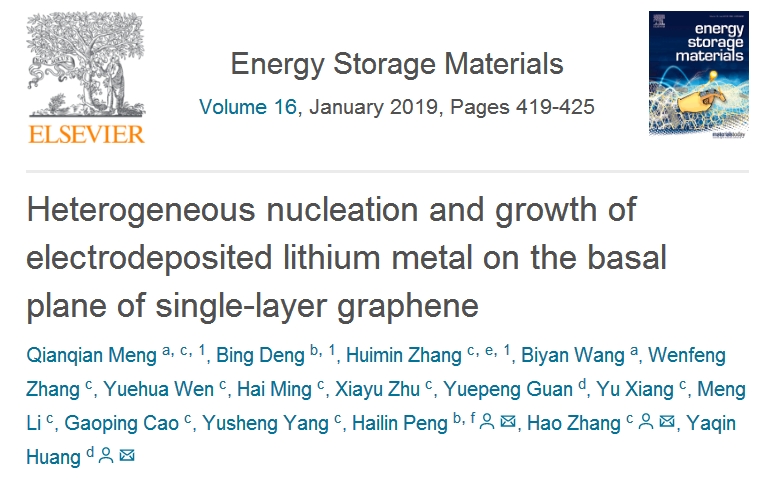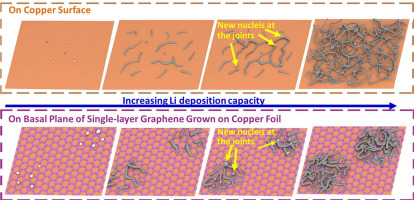Search Product
Structure Search
Search
Advantage Products
Location: Industrial Info
Single-layer graphene—The barrier of lithium dendrites
2018-07-17
来源:转载自第三方
17 July 2018
Recently, Peking University, Beijing Graphene Institute and other units jointly published an article entitled "Heterogeneous nucleation and growth of electrodeposited lithium metal on the basal plane of single-layer graphene" on Energy storage materials, synthesizing a perfect single-layer graphene electrode and reveals the behavior of lithium atoms on which it is electrodeposited.

Lithium metal anodes have received great attention from researchers with extremely high theoretical capacity and most negative potential. However, in the process of repeated deposition and precipitation of lithium ions, lithium metal dendrites easily grow on the surface of lithium metal anodes, which not only greatly reduces the utilization rate of the battery, while "lithium dendrites" will continue to grow, pierce the diaphragm, causing a short circuit in the battery. In recent years, the method of constructing a metal lithium anode skeleton by porous carbon-based materials has inhibited the growth of lithium dendrites, but the basic research on the electrodeposition nucleation of metallic lithium on the carbon lattice is still blank.
Graphene is a single-layer two-dimensional crystal composed of hexagonal honeycombs arranged in a hexagonal shape. It is known as a "magic material" that changes the 21st century. It has high conductivity, high strength and toughness, and is used not only in aerospace and solar energy, nano, electronics, biomedical, composite materials and other fields have been widely used, and in our clothing, daily necessities, etc. also have unique commercial application potential, the future development prospects are very broad. It has the following characteristics:
? The thinnest and hardest nanomaterial in the world;
? almost completely transparent (absorbing 2.3% of light);
? Thermal conductivity up to 5,300W/m•K;
? Electron mobility is 15,000cm2/V•s;
? Minimum resistivity (10-6Ω•cm)
In this study, the researchers first revealed the basic behavior of Li metal nucleation and growth on the carbon surface. They used chemical vapor deposition to grow a single layer of graphene with a nearly perfect structure on the Cu foil. As an ideal Li plating substrate, it has a higher nucleation barrier for Li nucleation and is more difficult to nucleate. Graphene may be substituted for the metal as a current collector or may have an inhibitory effect on crystallization. At the same time, the carbon-based surface is more likely to form an isolated and thicker dendritic layer.

This study reveals the understanding of the related mechanisms of metal nucleation on the lattice of carbon atoms, dendrite growth, etc. In order to solve the problem of lithium dendrite growth, the theoretical basis for designing a more effective three-dimensional carbon skeleton metal lithium anode provides a theoretical basis. The basic research gap of metal lithium in heterogeneous nucleation on the carbon atom lattice has been filled up, we hope that high-energy density metal lithium battery can go to large-scale commercialization as soon as possible.
Reference
[1] Qianqian Meng, BingDeng, HuiminZhang, et al. Heterogeneous nucleation and growth of electrodeposited lithium metal on the basal plane of single-layer graphene. Energy Storage Materials, 2019, 16, 419-425.
Edited by Suzhou Yacoo Science Co., Ltd.
如果涉及转载授权,请联系我们。












